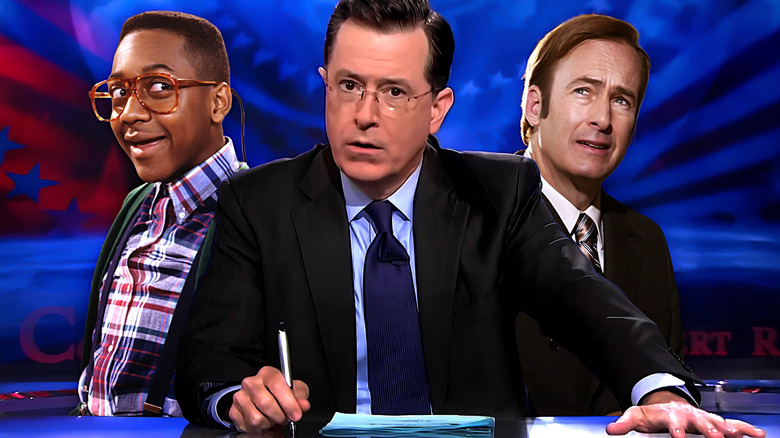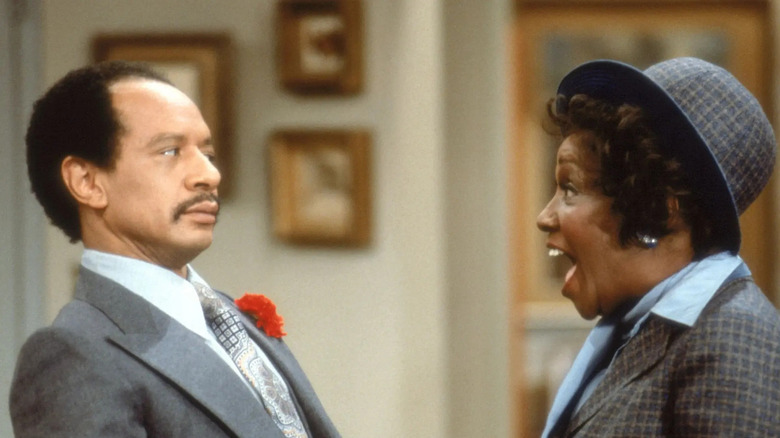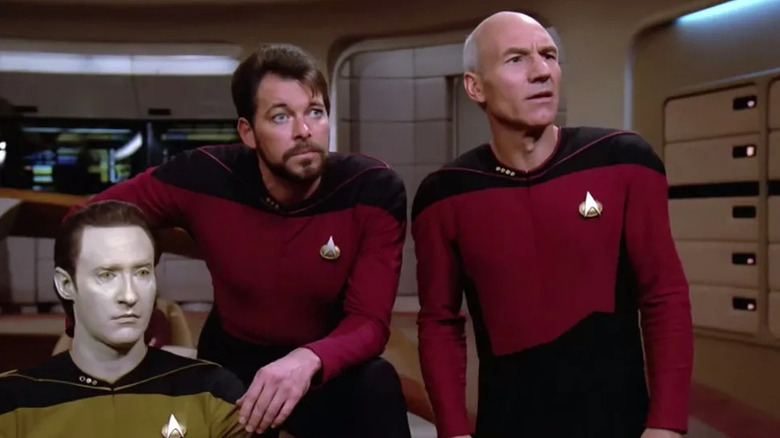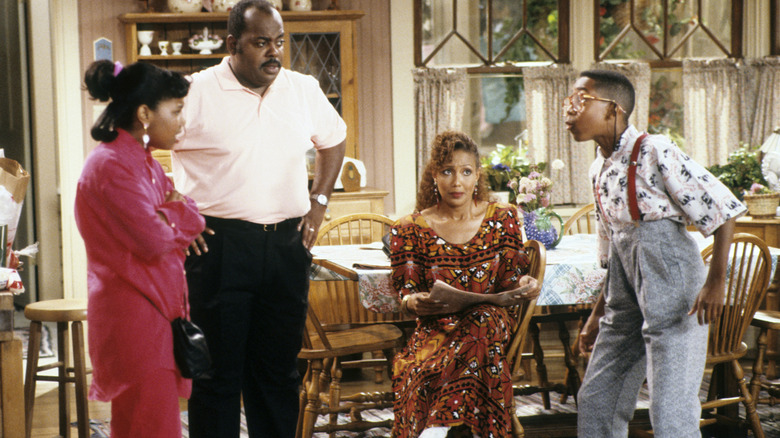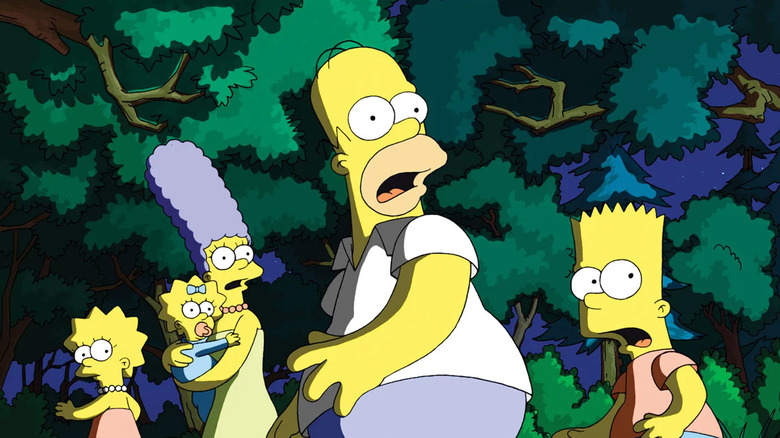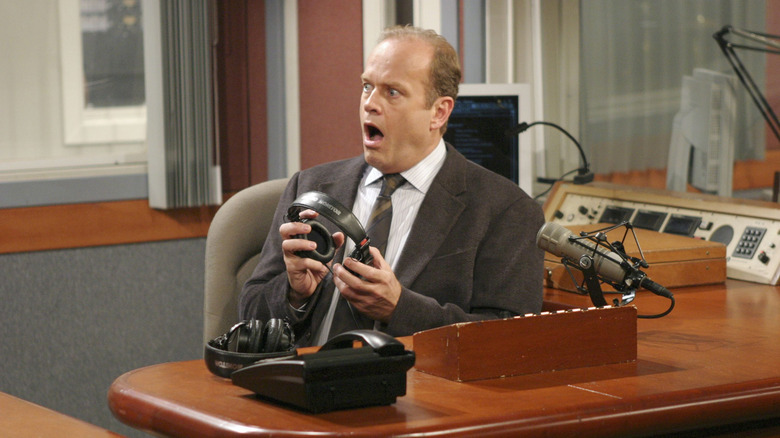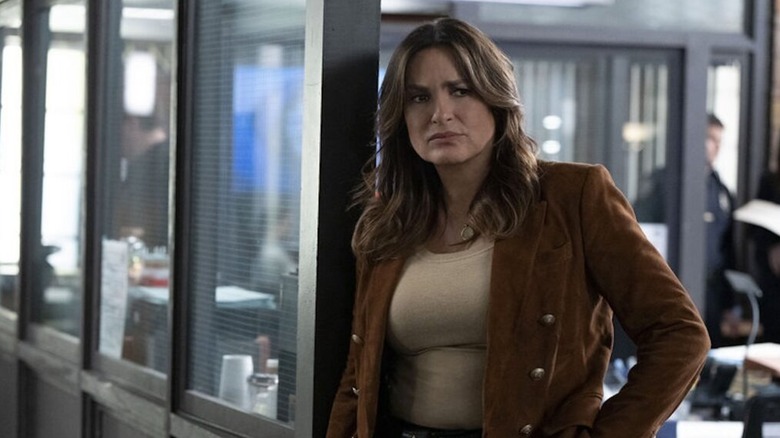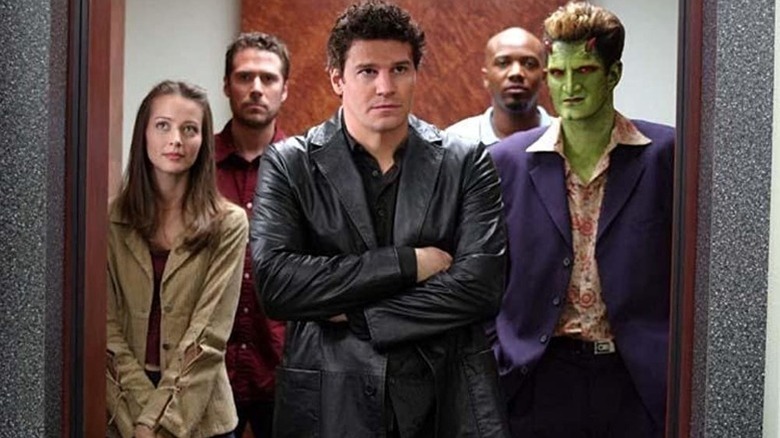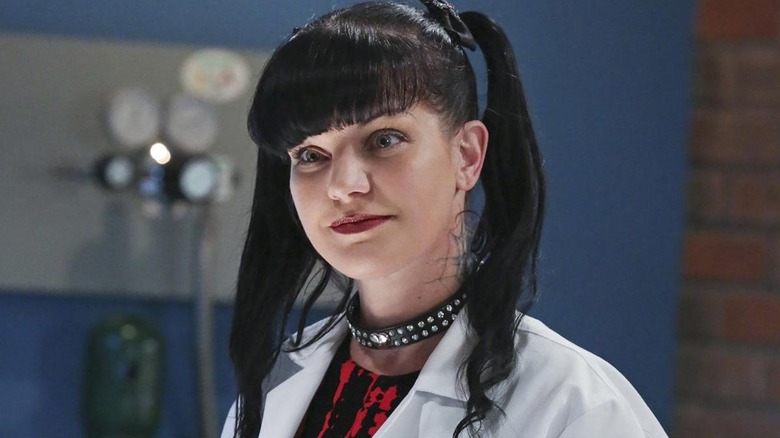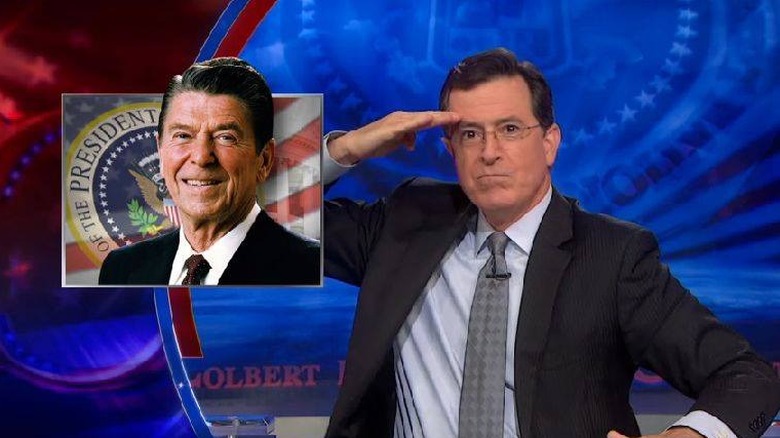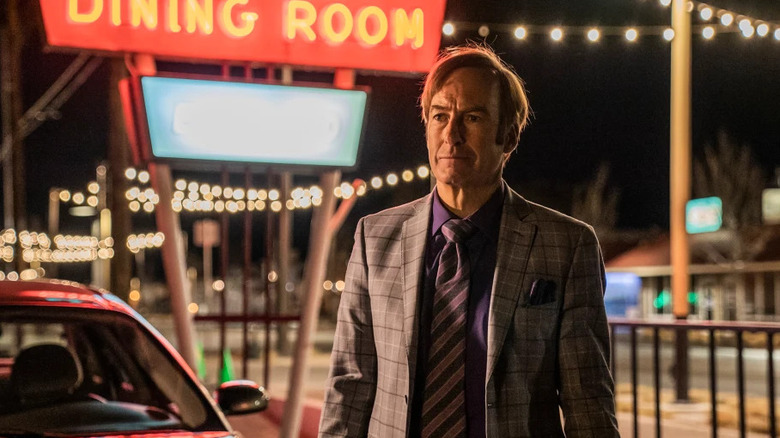The 12 Best TV Spin-Offs Of All Time
Some of the most successful shows in television history forged their own legacy as spin-offs from preexisting series. In many cases, these spin-offs are more popular and enduring than the shows they originated from in the first place. Spin-offs can be continuations, side stories, or revivals of an original property, completely reinvigorating a franchise as it expands it. And virtually every genre and format has seen its fair share of thriving spin-offs, from crime procedurals and sitcoms to animated series and talk shows.
In some instances, a spin-off builds directly off its originating show while in other instances, some successful spin-offs require no prior knowledge of the previous series. No matter what form they come in or how connected they are to other shows, audiences love spin-offs, making them a staple in the industry for decades. With all that in mind, here are the 12 best television spin-offs of all time.
Happy Days
"Happy Days" remains an American cultural institution, practically cementing the template for family-friendly sitcoms and a television staple for 11 seasons. Set in the Milwaukee suburbs during the '50s and '60s, "Happy Days" centered on the middle-class Cunningham family as their children grew up. The show's prominent '50s nostalgia and breakout character, Fonzie (Henry Winkler), make it a genre-defining success. Interestingly, the series was initially a failed pilot that got its chance as a spin-off from the anthology series "Love, American Style."
After failing to find an interested network under myriad working titles, the pilot that would become "Happy Days" aired as a segment on "Love, American Style" in 1971. Between this airing and the success of the similarly '50s-set "American Graffiti," also starring Ron Howard, ABC decided to order "Happy Days" to series in 1973. Premiering early the following year, the show grew into the cultural phenomenon that we know today. Coincidentally, the premiere aired four days after the final episode of "Love, American Style," which only ran four seasons compared to its more successful spin-off.
"Happy Days" went on to spawn seven spin-offs of its own, from the popular "Laverne & Shirley" and "Mork & Mindy" to short-lived flops like "Joanie Loves Chachi" and "Blansky's Beauties." What could've been an unseen dropped pilot quickly grew into its own family of shows.
The Jeffersons
The Jeffersons were part of the groundbreaking sitcom "All in the Family" since its earliest episodes, with the family moving next door to the protagonists in the eighth episode. After the success of "Maude," it was decided the Black family would star in a second spin-off, "The Jeffersons." Premiering in 1975, the show had George Jefferson (Sherman Hemsley) move his family from Queens to the Upper East Side of Manhattan as his dry-cleaning business flourished. George, his wife Louise (Isabel Sanford), and their son Lionel (Mike Evans), got to know their eccentric neighbors while experiencing the ups and downs of life.
"The Jeffersons" is a spin-off that stands just as well on its own, without needing any real prior knowledge of "All in the Family." And with that autonomy and Hemsley and Sanford leading a likable cast, "The Jeffersons" ran for 11 seasons, longer than "All in the Family" before its rebrand. In addition to its strong sense of humor, the show also provided its own social commentary, touching on formerly taboo topics like divorce and substance abuse. Groundbreaking in its own way, not the least for its positive depiction of a Black family making it in America, "The Jeffersons" was a trailblazer in its own right.
Star Trek: The Next Generation
While the "Star Trek" franchise was finding success on the big screen, sidelined creator Gene Roddenberry brought the franchise back to television with "Star Trek: The Next Generation." Set roughly a century after the "Star Trek: The Original Series," Captain Jean-Luc Picard (Patrick Stewart) helmed this era's Enterprise. In this time period, Picard and his crew faced fresh twists on familiar "Star Trek" elements along with a growing number of completely new ones. "TNG" ended up running for seven seasons, more than twice as many as "TOS" did in the '60s.
Right from the opening episode, "TNG" established itself as a "TOS" spin-off, with a cameo appearance from Dr. McCoy (DeForest Kelley) and a new take on the Enterprise. What "TNG" did so well was introduce elements to the "Star Trek" lore that felt both refreshingly original and organic to the universe of "TOS." At the same time, "TNG" remixed existing "Star Trek" elements, especially the Klingon Empire, in ways that made them exciting again. "TNG" not only restored "Star Trek" to television but directly spawned several successful spin-off shows and movies, making it the rare spin-off that outdid the original.
Family Matters
The '80s sitcom "Perfect Strangers" was an underrated show of its era, following Larry Appleton (Mark Linn-Baker) welcoming his distant cousin Balki Bartokomous (Bronson Pinchot) as his impromptu roommate in Chicago. The series had these two move to different apartments throughout the series, with the third season including elevator operator Harriette Winslow (Jo Marie Payton-France). After season 4 introduced Harriette's husband Carl (Reginald VelJohnson), the couple and their family were given their own spin-off, "Family Matters," the following season. Premiering in 1989, "Family Matters" really took off with the introduction of the Winslows' obnoxious neighbor Steve Urkel (Jaleel White).
Though "Perfect Strangers" was a success in its own right, "Family Matters" became an enduring show synonymous with family-friendly early-'90s sitcoms. More than just becoming the show's breakout character, Urkel was elevated into a television icon, complete with his own nasally catchphrase. "Family Matters" was part of a de facto shared television universe, including "Perfect Strangers" and "Full House," with its characters appearing sporadically on other shows. A '90s staple, "Family Matters" captured the zeitgeist to deliver a wholesome sitcom that overshadowed its parent series.
The Simpsons
"The Simpsons," the longest-running scripted primetime series in American television history, started out as a spin-off. The 1987 sketch comedy series "The Tracey Ullman Show" included various shorts as part of its recurring sketches, including animated segments, most notably "The Simpsons." While more crudely animated and voiced than the spin-off series that would follow, the segment's basic premise was the same, following the eponymous middle-class suburban family. The first three seasons of "The Tracey Ullman Show" featured the segments, with "The Simpsons" becoming a series in 1989, while "The Tracey Ullman Show" ended in 1990.
Though a constant presence as part of her show for three seasons, Tracey Ullman herself was reportedly not a fan of "The Simpsons" shorts. Ullman didn't believe the animated segment's quality was on par with the rest of her show, a view allegedly shared by Fox executives who considered axing the recurring segment. Instead, the segment was given its own half-hour spin-off to help bolster Fox's original primetime programming with its first adult animated series. "The Simpsons" went on to become a cultural phenomenon and foundational success for the Fox network, with Ullman unsuccessfully suing Fox for a share of the spin-off's success in 1992.
Frasier
"Cheers" ruled the airwaves from the '80s into the early '90s as one of the most successful sitcoms of all time. One popular character, introduced in the show's third season, is psychiatrist Frasier Crane (Kelsey Grammer), who helps protagonist Sam Malone (Ted Danson) cope with a bad breakup. After the conclusion of "Cheers" in 1993, Grammer reprised his role as Frasier in an eponymous spin-off later that year. The spin-off followed Frasier as he relocated to Seattle following an off-screen divorce, reconnecting with his father and brother.
Like "Cheers," "Frasier" ran for a total of 11 seasons, though it was significantly different from its predecessor. Reflecting its intellectual main characters, much of the dialog-driven humor was higher-brow than "Cheers," though the show deftly kept its sophisticated characters relatable. Grammer reprised his role for a revival series on Paramount+ in 2023, returning the character to the Boston stomping grounds he enjoyed on "Cheers." "Frasier" continued the "Cheers" legacy well into the 21st century, certainly more successfully than its first spin-off, "The Tortellis."
Law & Order: Special Victims Unit
It's hard to remember a time when there was only one "Law & Order" series on television, but the venerable police procedural didn't receive its first spin-off until 1999. Two days before "Law & Order" launched its 10th season, "Law & Order: Special Victims Unit" made its debut. "SVU," as it became colloquially known, generally explored darker subject matter than its parent series, often focusing on sex-related crimes. The series followed Manhattan police detective Olivia Benson (Mariska Hargitay), with her hard work and keen talent in crime-solving leading her to rise through the ranks of her precinct.
Benson and her partnership with fellow detective Elliot Stabler (Christopher Meloni) provided much of the appeal for "SVU" in its first 12 seasons before Meloni left the series. Hargitay has served as a reliable for the constant series without her fan-favorite partner, complemented by the rotating ensemble cast. After the main "Law & Order" took an extended hiatus, "SVU" became the de facto flagship series of the franchise, a distinction it proved itself more than worthy of. Hargitay has since become the face of "Law & Order," with "SVU" going strong as one of the longest-running scripted shows of all time.
Angel
As problematic as creator Joss Whedon's reputation may have become in recent years, "Buffy the Vampire Slayer" remains an influential and enjoyable blend of paranormal horror and coming-of-age drama. The show's initial primary love interest, guilt-ridden vampire Angel (David Boreanaz), left after its third season to continue his search for redemption. In reality, Angel was given his own eponymous spin-off series, battling demons in Los Angeles as part of his atonement. Angel was joined by Buffy's old classmate Cordelia Chase (Charisma Carpenter), with the final season also adding Spike (James Marsters), Angel's fellow vampire and frenemy.
While not as long-running "Buffy the Vampire Slayer," "Angel" still enjoyed a five-season run and provided its own distinct take on the franchise. Without any coming-of-age underpinnings, "Angel" was a much more action-oriented series than its predecessor, elevated by Boreanaz's performance. "Angel" had its own fair share of highs and lows, but the show largely got better as it went, recovering from a lackluster fourth season with its final offering. And while "Angel" retained the supernatural stakes and sass of "Buffy the Vampire Slayer," it also proudly stood on its own terms.
NCIS
The military crime procedural "NCIS" is a bonafide television empire on CBS, running for over 20 seasons and counting, and launching no less than five spin-offs. What modern viewers may forget is that "NCIS" started out as a spin-off itself, originating from CBS' other naval crime procedural "JAG." The new show debuted via a two-part backdoor pilot in season 8 of "JAG," introducing fans to Special Agent Leroy Jethro Gibbs (Mark Harmon) and his team of investigators. Launched in 2003 under the original title "Navy NCIS: Naval Criminal Investigative Service," the series eventually shortened its title simply to "NCIS."
With its likable cast, "NCIS" not only doubled the decade-long run of "JAG" but also became the reigning crime procedural on CBS after the eventual end of the "CSI" franchise. Spin-offs expanded the branch's mission to other locales around the United States before expanding worldwide with "NCIS: Sydney." Through it all, "NCIS" keeps its focus largely on case-of-the-week storytelling and its various main casts gelling as a team and found family. A thriving franchise that has rolled with changes to the television industry for over two decades, "NCIS" has long since outgrown the legacy of "JAG."
The Colbert Report
Stephen Colbert is one of the biggest names in late-night television, having hosted "The Late Show with Stephen Colbert" since 2015. Colbert's first major talk show hosting gig was leading "The Colbert Report," a satirical news show on Comedy Central. On the show, with "Report" pronounced with a silent "t" in keeping with its host's last name, Colbert plays a fictionalized version of himself, unabashedly eschewing conservatively jingoistic talking points. This format skewered contemporary conservative political talk shows of the time, most visibly "The O'Reilly Factor" hosted by pundit Bill O'Reilly.
"The Colbert Report," is a direct spin-off of "The Daily Show," where Colbert appeared as a correspondent and occasional fill-in host before being given his own show. Before "The Daily Show," Colbert had played a self-important conservative pundit on "The Dana Carvey Show," an unintended trial run for the character he later popularized on "The Colbert Report." These two satirical takes on televised news reporting and commentary significantly informed "The Colbert Report" when it premiered in 2005. Colbert has since periodically reprised his old "Colbert Report" persona on "The Late Show," raising the question if Colbert's current talk show should similarly be considered a spin-off.
The Flash (2014)
While the Marvel Cinematic Universe was at its peak dominating the big screen, DC Entertainment formed its own cohesive shared television universe, primarily on the CW. This all started in 2012 with the premiere of "Arrow," a dark and gritty take on DC's archer-themed superhero Green Arrow. The second season introduced visiting Central City forensic scientist Barry Allen (Grant Gustin), who gained speed-related superpowers after being caught in an electrified chemical bath. Gustin headlined the subsequent spin-off series, "The Flash," which premiered alongside the third season of "Arrow," with characters from both series often appearing in each other's shows.
There was a time when "The Flash" was the best superhero show on television, as Marvel Studios and Marvel Television caused logistical headaches for each other. Gustin's Scarlet Speedster was a breath of fresh air compared to overly grim DC superhero takes at the time and quickly built its own fan base. The spin-off's success led to even more interconnected shows in the resulting Arrowverse, with the Flash occasionally appearing to seal the shared universe appeal. Though "The Flash" may have stayed in the race a bit too long, its well-deserved success created a long-lasting television-shared universe and winning superhero show template.
Better Call Saul
One of the most charismatic characters introduced in AMC's acclaimed crime drama "Breaking Bad" was unscrupulous attorney Saul Goodman (Bob Odenkirk). Debuting in season 2 as the complicit lawyer for aspiring drug lord Walter White (Bryan Cranston), Goodman goes into exile under an assumed identity in the final season. The subsequent spin-off "Better Call Saul" not only continued Goodman's story after "Breaking Bad" but showcased his origins as an immoral attorney originally known by his real name, Jimmy McGill. From sparring with his estranged brother Chuck (Michael McKean) to his beginnings working for local criminal figures, the spin-off significantly expanded the world of "Breaking Bad."
What "Better Call Saul" does wisely is gradually revisit and reframe familiar elements from "Breaking Bad" across its six-season run. Still visibly and tonally similar to its originating series, "Better Call Saul" subtly mixes its own flavor into the franchise, largely through Odenkirk and co-star Rhea Seehorn. After the spin-off's own voice becomes firmly established, its connections to "Breaking Bad" become clearer as it continues its focus on the self-inflicted tragedy of Saul Goodman. Just as good, if not arguably better, than "Breaking Bad," "Better Call Saul" maintains the quality that made its predecessor so renowned while forging its own path.
